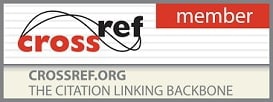- Multidisciplinary Journal
- Printed Journal
- Indexed Journal
- Refereed Journal
- Peer Reviewed Journal
ISSN Print: 2394-7500, ISSN Online: 2394-5869, CODEN: IJARPF
IMPACT FACTOR (RJIF): 8.4
Vol. 2, Issue 3, Part F (2016)
CT scan as predictor of outcome in traumatic brain injury
CT scan as predictor of outcome in traumatic brain injury
Author(s)
Abstract
Introduction: The term “Traumatic Brain Injury†is synonymous with Head Injury. The main evidence of Head Injury is loss of consciousness or alteration in conscious state following injury. Brain function is temporarily or permanently impaired and structural damage may or may not be detectable with current technology.
Introduction: The term “Traumatic Brain Injury†is synonymous with Head Injury. The main evidence of Head Injury is loss of consciousness or alteration in conscious state following injury. Brain function is temporarily or permanently impaired and structural damage may or may not be detectable with current technology.
TBI is an injury that often affects a younger population. The occurrence of TBI peaks with age groups below 5 years, between 15-24 years, about half of those with very severe TBI do not survive. Of those who die, 50% do so within the first couple of hours after the injury. Trauma is still the leading cause of death from people ages 1 to 44. As TBI mainly affects normal healthy individuals it is important to treat it in golden hour & Platinum minutes to reduce mortality & morbidity. Treatment should be aggressive & proactive. CT scan is easily available, Non invasive, less time consuming & help sin treatment decisions we studied cases of TBI with CT scan finding as predictor of outcome in TBI.
Aim & Objectives: To study the CT scan as one of the important Prognostic Factors in Cases of Traumatic Brain Injury (TBI).To Study other pre-injury parameters that must be considered in analyzing a patients prognosis
Material & Methods: We selected 45 patients admitted in Tertiary care hospital. These patients were diagnosed to have traumatic brain injury with surgery as the primary line of management. The study design was a prospective non randomized trial.
Data was analyzed by using SPSS (Statistical package for social sciences) version 17:0.
Observation: Traumatic Brain Injury is more common in the younger age group. In our study acute (Subdural Hematoma) SDH was the most common CT scan finding followed by depressed fractures and (Extradural Hematoma EDH. Chronic SDH and retro orbital hematoma were the least common. Depressed fracture, chronic SDH & EDH have good prognosis whereas acute SDH has guarded prognosis.
Patients with acute SDH with midline shift with no other CT scan abnormality have better prognosis than patients with acute SDH with midline shift with severe SAH / contusions. There is association between type of hematoma and survival at 1 year. EDH has good prognosis whereas acute SDH has guarded prognosis.
Conclusion: Traumatic brain injury is more common in the younger age group CT scan findings) is an independent predictors of survival in patients of Traumatic Brain Injury (TBI).
Pages: 332-336 | 1278 Views 75 Downloads
How to cite this article:
Dr. Sanjay S Vhora, Dr. Ramesh Pandurang Sangle, Dr. Charandeep, Dr. Mayur V Barhate, Dr. Madhur M Pardasani, Dr. Rohit Pandey, Parth Vhora. CT scan as predictor of outcome in traumatic brain injury. Int J Appl Res 2016;2(3):332-336.






 Research Journals
Research Journals